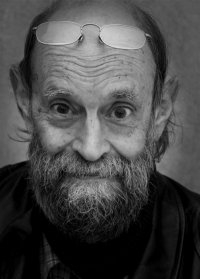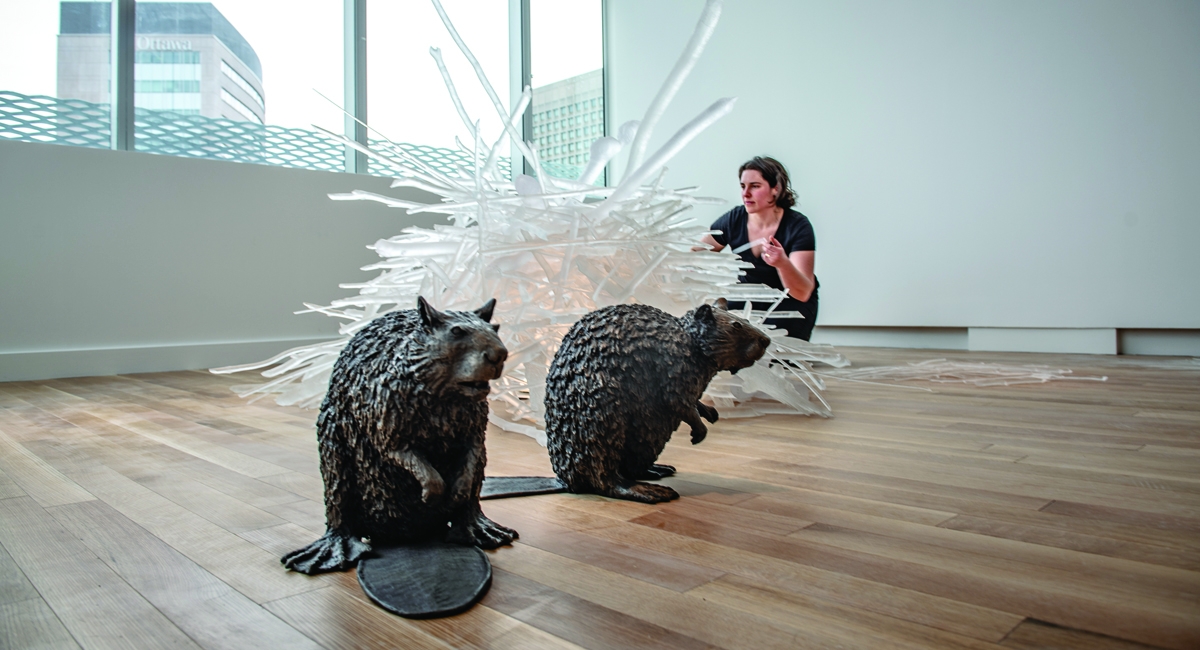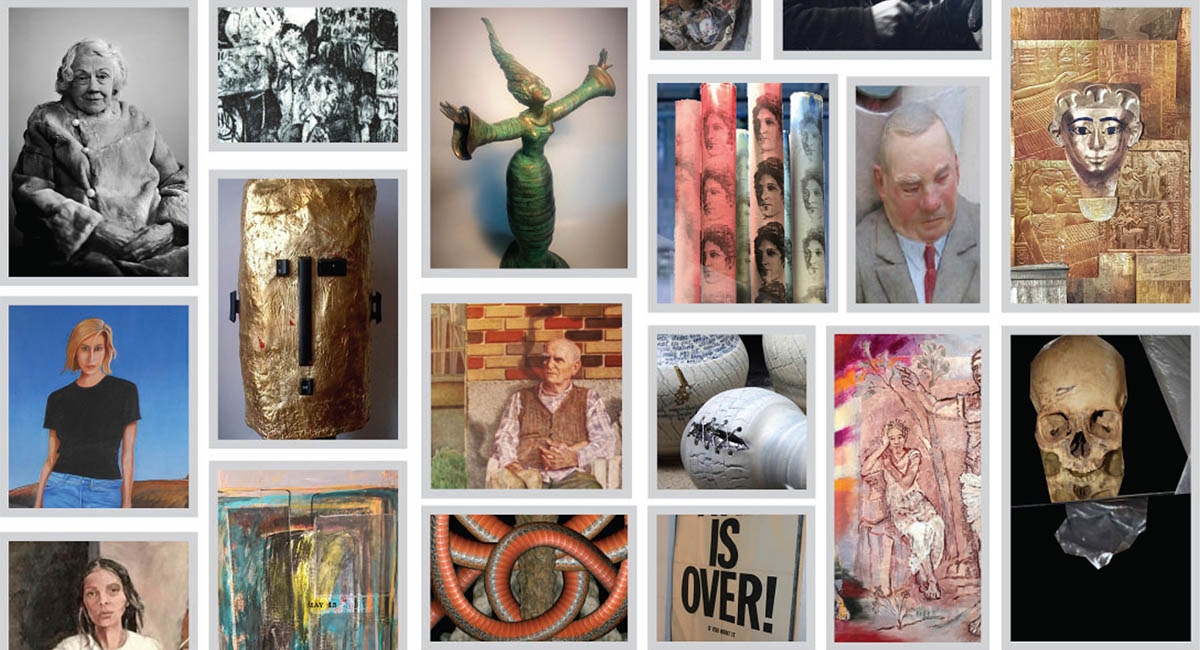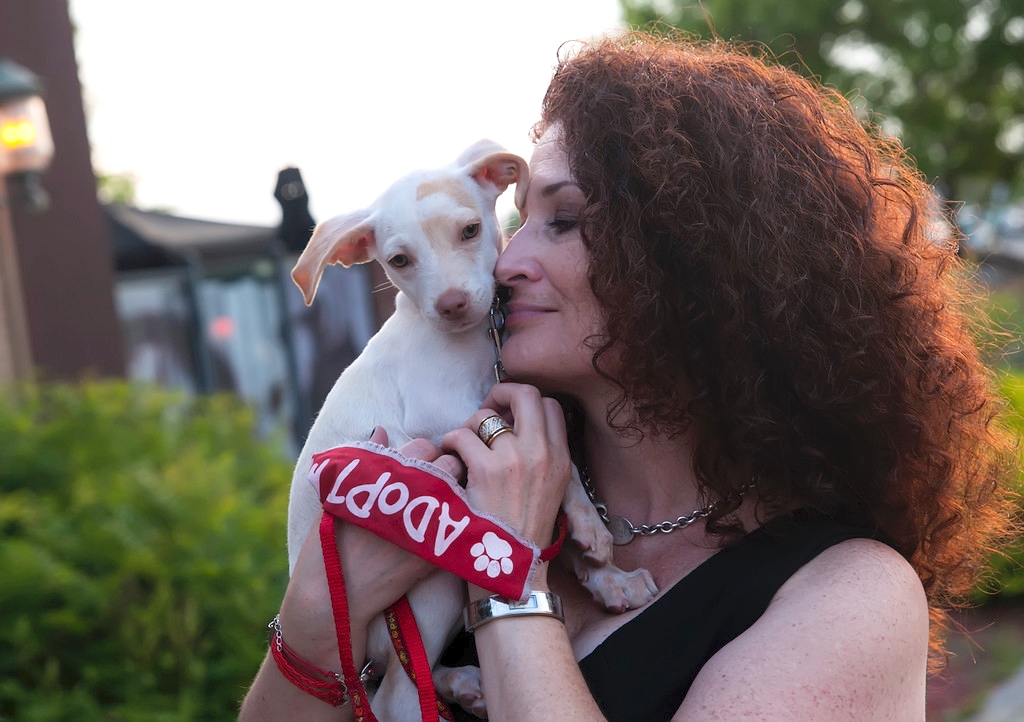
Ted Rusoff: The High Priest of Dubbing
The expatriate American actor Ted Rusoff was born in Winnipeg in 1939, the son of screenwriter Lou Rusoff. As very few feature films were being produced in Canada at the time, Lou was lured to Hollywood in 1947 by his brother-in-law Samuel Z. Arkoff, a lawyer who would later found American International Pictures (AIP). Lou was put to work right away, first in radio (Night Beat) and then in the fledgling medium of television (Four Star Playhouse, Terry and the Pirates).
“Starting in the mid-fifties, my dad wrote or produced many pictures for AIP, including several in the horror genre, so I grew up surrounded by movie people,” Ted recalls. “As soon as I got a driver’s license, I was employed as the lowliest of production assistants on a number of their films, and appeared in lots of crowd scenes as an uncredited (and unpaid!) extra.”
In the mid-sixties, AIP sent Ted (who was raised in a multilingual family and has an aptitude for languages) to Europe to oversee the dubbing of their films into French, German and Italian, all languages that he spoke. Ted worked in studios in Brussels and Munich, before settling in Rome.

Before his arrival in Europe, there had been numerous complaints from American distributors about the quality of the dubbing; now that someone from head office was close at hand, it improved dramatically. These were the halcyon days when AIP was producing feature films in Europe, including such drive-in classics as Terror in the Crypt, War of the Zombies, The Last Man on Earth, Planet of Blood and Dr. Goldfoot and the Girl Bombs. Ted Rusoff was involved in dubbing all of them. He also served as a dialogue coach on several of these European-made pictures, helping actors improve their pronunciation and inflections or learn their English dialogue phonetically.
“I knew nothing whatsoever about dubbing at the time, but apparently just having someone from the home office breathing down their necks made the vocal actors toe the line and the dubbings improved,” Ted says. “I of course deserved no credit for this, but it was given to me and I accepted it graciously. I loved Rome, wanted to stay for a year or so, and sync work looked like a good way to support myself. I’ve been here now for 50 years. Since 1963, I have sync-adapted and directed the dubbing of over 500 films shot in many languages (including Finnish, Turkish and Korean), but mostly from the standard European languages into English, and a few into Italian and French. I have taken part as a dubber or vocal actor in over 1,200 films. Later on, I branched out into documentaries, cartoons and commercial voice-overs. As far as my live-movie career goes, I have appeared in 40-odd films, acting in a variety of languages (Italian, French, German, Aramaic, Danish, Greek, Russian and others).
“My movie career really took off when I had the stroke of good fortune of growing old! Casting directors went for my new look and I was often cast as priests, monks, elders and rabbis. Through the sixties and seventies, I was working so hard in dubbing — every single day, making a ton of money — that I didn’t have time to go out and look for acting jobs in films. I only started doing that when the dubbing work slowed down in the late seventies. You’ll notice that my acting resume starts in 1980. I’ve been lucky to get a lot of acting jobs in those 32 years.”

Rusoff recently appeared as the strange owner of an occult bookstore in the Canadian-produced horror film Eternal, about the coming-back-to-life of Erszebet Bathory, the bloodthirsty 16th-century Hungarian countess who inspired the legend of Dracula. Filmed in Venice, Eternal was co-directed by Federico Sanchez and Wilhelm Liebenberg and produced by Wildkoast Entertainment. “Other than that, I’m dubbing cartoon series and translations, the usual.” Rusoff most recently dubbed Brett Halsey’s voice for the violent American western The Scarlet Worm (2011), which has garnered excellent reviews and is developing an international cult following.
We caught up with Ted Rusoff at a sidewalk café on the Via Veneto in Rome.
You teamed up with former Hollywood leading man Edmund Purdom in the 1982 horror thriller Rosso Sangue (aka Absurd and Monster Hunter). Tell us about your role and about working with Purdom (cast as a priest) and George Eastman (Luigi Montefiori) as the monster.
Ted Rusoff: I played a doctor in a hospital, pointing to an X-ray of George Eastman’s skull. I was explaining to Edmund the malformations I had discovered in the frontal lobe that would account for Eastman’s strange behavior. Edmund and I shot our scenes at a retirement home. He was playing a Catholic priest and was costumed accordingly, backwards collar and all. The old ladies took Edmund for an actual priest, crowding around him, asking him to pray for them and say mass for them! (Laughs) We couldn’t get Edmund away from them to shoot the scene.
I had no scenes with Eastman. He was a former wrestler, a big guy, about 6’7”. He did a film with my late wife (Carolynn de Fonseca) — playing a big bruiser in Detective School Dropouts (1985).
In 1983, you appeared in Marco Ferreri’s masterpiece Tales of Ordinary Madness, from the novel by Charles Bukowski. Any comments on working with star Ben Gazzara, who played a tortured, alcoholic poet/writer?
TR: Only one of my three scenes involved Ben. I peeked into his hospital room (I was a priest, of course — as a matter of fact, it might very well have been my first priest gig) and asked if anyone needed me. Ben’s answer was to glare at me and get back to what was uppermost on his mind: not the consolations of religion, but his efforts to persuade the pretty nurse to go down on him. That was the extent of my interaction with him. Ben gives good glare.
I found Marco Ferreri a very interesting type: austere, autocratic, unapproachable, yet somehow likeable. Now that’s a good trick. I’ve tried it a few times as an acting exercise and I’ve failed every attempt miserably. He was very different from Tinto Brass, who loves to present a gruff, curmudgeonly exterior to the world, but whose pussy-cat interior is immediately apparent to most (but not all) people.
Did you sing in Franco Zeffirelli’s film version of the opera La Traviata (1982)?

TR: It was all prerecorded, but we sang our hearts out. I was hired as a musician and sync expert. Franco wanted me to keep an eye out, make sure everyone was singing in sync. He invented a role for me, Alfredo’s friend.
I had the privilege of working with Placido Domingo, the greatest opera singer of the past 30 years. I remember standing next to Placido and hearing these golden tones pouring out of him, and thinking what a shame that they were going to be lost to the world — the pre-recorded version is all that was ever heard — and how lucky I was to be hearing them, as it were, in close-up. You know, all I ever wanted to be was a great opera singer. I sang in Don Giovanni in San Francisco in 1962. A friend recorded me and he did me a great favor, because after hearing myself, I decided to find another career! But of course I still love opera.
In Catacombs (1988), you co-star as Brother Brandt, who comes up against a demon trapped in a monastery. How did you like working on this schlock production helmed by David Schmoeller?
TR: I enjoyed it. They built an amazing set at “Dinocittà,” the studios that Dino de Laurentiis built outside Rome. I’m sure these expensive sets were used in many other films — the monastery, the insides of tunnels branching off in eight different directions, really well done. I even did my own stuntwork, which I foolishly agreed to. I had to fall over backwards into a grave. I also got to show off my languages in Catacombs. I sang liturgical phrases in Latin, Greek and Hebrew, while carrying an old musty tome. I always enjoy working in dialect.
In 1989, you appeared in Death à la Mode/Fashion Crimes, a giallo with Anthony Franciosa. Did Franciosa live up to his reputation of being a volatile Method actor?
TR: Yes. I had two scenes with him. Tony was very impatient with me. He said, “Come on, give me something!” I had to take it because he was the star. I said, “Tony, my character is described in the script as laid back and unemotional. What do you want me to give you that I’m not giving you?” He admitted I had a point. But I respected Tony, because he was involved. His best didn’t happen to coincide with what I was trying to do, but Tony was in there fighting. He was doing what he thought was best for the film.
Then you played a supporting role in Sinbad of the Seven Seas (1989), with Lou Ferrigno. I hear that this fantasy tale didn’t turn out so well. Any comments?
TR: (Laughs uproariously) I was actually forced to sit through a screening of Sinbad of the Seven Seas. We shot the picture at de Paolis Studios in Rome. I don’t think it ever got released. I was called something like Bloco the Clumsy Bandit. Lou Ferrigno punched me out. Sinbad of the Seven Seas was just so schlocky. One expects a certain amount of schlock in such a film, but this one looked so cheap, like they had taken a rock and tried to make a set out of it. You’d think that with a recognized name like Lou Ferrigno, they would have spent some money on the picture.
In 1993, you were cast in a stylish erotic film — The Voyeur, directed by Tinto Brass — playing a character called “The Porking Attendant.” Would you agree that Brass’ films are prime examples of how sex flicks should be made?
TR: Absolutely. I love working with Tinto and I’ve worked with him a lot. I helped him translate his scripts into English. I have also dubbed two of his films into English — Capriccio/Capri Remembered (1987) and Così fan tutte/All Women Do It (1992).
Tinto is a great cinematographer. We were sitting in Cinecittà mixing the final version of Capriccio when these two guys let themselves into the recording studio. Tinto paid no attention to them. He was concentrating furiously. I could hear the two gentlemen whispering to each other, marvelling at Tinto’s colour footage. One guy said, “Beautiful stuff! How did he get that effect? I’ve never been able to do that!” He was not saying this loudly for Tinto’s benefit. At the end of the reel, the lights came on, and I saw that the gentleman in question was Federico Fellini!
You co-starred with Maximilian Schell in The Eighteenth Angel (1997), a horror story about disenchanted monks who choose Lucifer as their god and try to summon him in modern-day Rome. Anything to say about your participation in this occult thriller?

TR: I am often cast as religious figures or mad scientists. This was one of my mad scientist roles. I had a lot of fun on it, storming around for five or six days, plotting to rule the world. The production finished, and then 10 days later, I get a call from California. They needed me for reshooting out there. I did two days in L.A. and they paid me a fortune, flew me there and back first class. So then I fly back to Rome and I get another call from the producer (Doug Curtis of Rysher Entertainment). They need me for a couple more scenes. I say, “You’ve got to be joking!” Despite all the reshoots, I understand The Eighteenth Angel is not very good, but I got two trips to L.A out of it.
You were then featured in Nightworld: Riddler’s Moon (1998), a story about mysterious visitors from outer space set in the American heartland. What was your involvement in this tale of aliens landing in the Indiana cornfields?
TR: We shot that in Luxembourg, where there are lots of rolling hillsides that can pass for Indiana. I played a stiff and austere clergyman in a scene with Corbin Bernsen. He’s a darn good actor who deserves better.
In 1998, you turn up in Nightworld: Lost Souls, a haunted house story starring John Savage. How do you rate Lost Souls, which I’ve heard is quite frightening?
TR: There were four Nightworld TV movies shot and I was in two of them. These were Canadian and European Union coproductions. In Lost Souls, I played a cranky old man with a disfigured son. It was only one day’s work, but John Savage was an absolute pleasure to work with — a fine actor and a giver. He would consult with me before we played our scenes together.
What can you tell me about Wolverine (2000), based on a story by Frederick Forsyth?
TR: I got to trot out my Spanish on that one. I played the head of a Colombian drug cartel. In one scene, I really laid it on heavy with Francesco Quinn (Anthony’s son) and I think he took the harangue personally because he was most unpleasant to work with after that. Francesco did not like my air of authority. Perhaps, as the lead player, he thought they were shooting me in close-up too much.
You appear as the Chief Elder in Mel Gibson’s The Passion of the Christ (2003), an epic detailing the final hours of Jesus Christ. This must have been an extraordinary production to be involved in. Can you give us some idea of the mood that prevailed on the set (Matera in southern Italy, substituting for Jerusalem)?

TR: All my dialogue was in Aramaic, which I do not speak at all. However, it is a very close relative to Hebrew, and many of the words were familiar to me. I am in practically every frame of The Passion of the Christ, but often in the background, with the close-ups on Jesus, Mary and others. I play the henchman of Caiaphas, the chief of the Council of Sages (or Sanhedrin). I repeatedly urge Caiaphas to demand that Pontius Pilate free Barabbas and crucify Christ in his stead. We did 60 days of shooting. I very seldom do big parts like this one. Maybe working with Mel will change all that.
Do you think The Passion of the Christ is anti-Semitic?
TR: If it is, then the entire New Testament is anti-Semitic. I can see where some people would say yes. I reread the New Testament during the shooting and there is nothing that is said or done in the film that is not to be found somewhere in the New Testament. Mel Gibson had a perfect right to do this particular take on it, but The Passion of the Christ is an incredibly bloodthirsty film. What the Romans do to the poor guy is just not to be believed. I watched the torture scenes, and they were really disgusting. I was shocked by the brutality, but that was really Mel’s whole point.
You are cast as the Rabbi Angel in Mike Nichols’ landmark production of Angels in America (2003), based on Tony Kushner’s prize-winning play about the early days of the AIDS outbreak in New York City.
TR: This was one of the great artistic disappointments of my life. I had four days scheduled on it, including a lovely little scene with Meryl Streep. We were shooting exteriors at Hadrian’s Villa just outside Rome. And for three of those days, I sat in my trailer while it rained cats and dogs. So we didn’t get to film most of the scene. I cross the camera at one point and that’s all you see of me. So don’t blink.
You costarred with Bob Hoskins in The Good Pope: Pope John XXIII (2003). Describe your role in this American TV-movie.
TR: I play the head rabbi of Istanbul who was working with Monsignor Angelo Roncalli (before he became Pope John XXIII), trying to rescue Jews during the Second World War. It was a good part with some emotion to it and I got to speak both Hebrew and Yiddish. Bob is the giving-est of actors, a consummate pro and an absolute joy to work with. While he was doing a big monologue scene, Bob surreptitiously pulled me one-sixteenth of an inch closer to him without losing a beat. He did this because he knew that’s where I would show up better in the light! Bob and I worked together once before in 1985 in Mussolini: The Decline and Fall of Il Duce. The man is amazing, a colossal talent and a lot of fun to be around. Bob is a big drinker after shooting wraps for the day and yet fresh as a bee the next morning. I don’t know how he does it.

I suppose the actors I most enjoyed working with would have to be Bob and Max von Sydow. Max and I were both cast as popes in Cellini: A Violent Life (1991) — Max was Pope Clement VII. I played his successor Paul III. Max is a genius, but with no ego. He would go out of his way to help everyone, even extras, look their best on camera.
Just recently, I played a kooky old character for an Italian TV program — a homeless German who spouts strange philosophical thoughts: “Beware the Red Wave, which will enter your mouth and eat you from inside” and all this sort of stuff, much to the amusement of the two young leads. The costume designer gave me a funny hat to wear and I decided to keep it. I told her there was no way this hat was getting back to her, that I would never be separated from it. She agreed to look the other way. I am more pleased about the hat than anything else in that three-day shoot. (Laughs)
As for upcoming projects, my agent has another rabbi role for me coming up, and I have lots of dubbing work to do, so I’m keeping busy. Working with Mel Gibson and Mike Nichols has elevated my profile in the entertainment business, and jacked up my price! So life is good.









